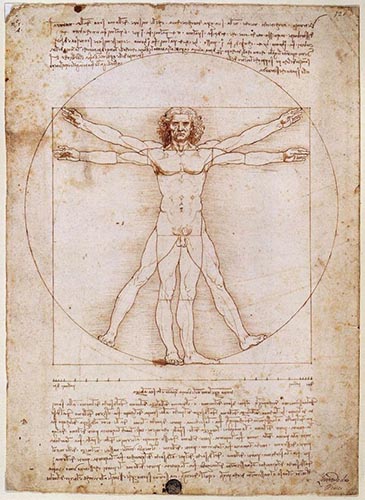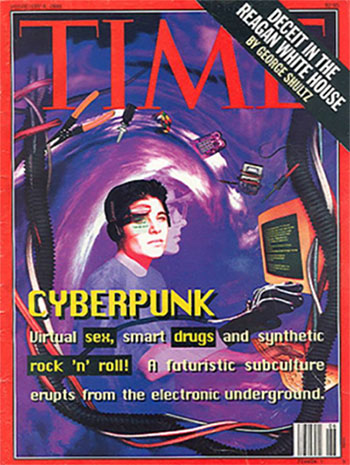How does data look?
The answer to this question is often seen as a matter of Data Visualization, a new field increasingly tasked with the role of imaging and imagining data. As a sign of the times, Strata + Hadoop World, the central conference of data professionals, just hosted its first Data Visualization conference in California. With growing urgency the central issue in this field mirror those that had afflicted design before it: where to draw the line between art and science, fact and fiction, form and function.
Seeing data, however, is not simply about the skillful manipulation of statistics into visual form. The way data is represented is necessarily tied up with the way and by whom it is presented. Therefore, to ask how data appears is to think about the broader politics of representation, that is the socio-cultural framework that guides how we are invited to view data, how we expect data to look like, function, and act.
Stylizing Data
Today—at least in the context of personal data, especially the type increasingly generated by an exploding suite of wearable devices—illustrations that offer ‘snapshots’ of the industry play a central role in regulating the way that data is both made manifest and perceived.
And among these, the following has become one of the most popular kinds:

Source: The Data Digest: Five Urgent Truths About Wearables, Forester Research.
This image is taken from a 2014 blog of a well-known market research firm Forester Research. Since that time this graphic has become canonical. Virtually every wearable technology event that I attend these days includes at least one derivative version of this picture amidst speaker slides.
What does it show?
Staying for the moment at the level of iconography, this image features a silhouette of a clean-cut man, dressed stylishly. The man in this image is wearing a fitted suit, dressed to appear in public, perhaps even sit center stage. There is a clear confidence if not an outright bravado in his pose. His is not a defensive stance; it’s a proclamation.
The red nodes spread across his body radiating like beacons likewise invite attention, maybe even directing the gaze. These nodes indicate the places where bio-sensors embedded in ‘wearable’ technology can now be placed on the body to collect a range of biometric and environmental data about the user. These could include watches and bracelets that collect heart rate and activity levels, patches and socks that measure blood oxygen or cadence, rings and headsets that keep track of stress, anxiety, and pleasure.
The formal question this image serves to animate, that is, the level of consumer comfort with wearable technology (a tepid one at that), hardly registers. Instead, judging by the way this graphic is regularly taken up in industry re-presentations, the illustration operates as a progress map that proudly demonstrates all of the possible sites a bio-sensor can now be placed on the human body. While the radiating red dots designate hot spots of activity, the spiraling bar-graphs, like the dials of a clock, suggest future progress. Spreading up and out, they point towards growth that at least in principle appears to be unrestricted. To gaze at this silhouette is to quietly marvel at the increasingly diminutive technology that now progressively canvases the body and to wonder—as one is often invited to do at industry events and conferences—at their increasing processing and knowledge producing capacities.
The Ideal Within
Readers will of course also recognize in the silhouette of the suited cyborg its fleshy Renaissance double: The Vitruvian Man, sketched by Leonardo da Vinci in 1490.

Source: Wikimedia Commons.
To Western eyes, the Vitruvian Man is a familiar image whose ubiquity perhaps rivals only that of the Mona Lisa. Culturally, this drawing has widely been adopted as a symbol of western science and general health. Little surprise that Forester Research has chosen this parallel. The authority of this image helps to situate the wearable industry and the data it produces squarely within a canonical scientific and aesthetic discourse rather than at its margins.
In imitating this image, however, Forester also establishes tacit correspondence with another well known fact. With this drawing, da Vinci famously paid homage to the ancient Roman architect Vitruvius whose work was a meditation on perfect proportion. The famous sketch’s alternate title is “The Proportions of the Human Body According to Vitruvius.” In the original, the outstretched limbs of two superimposed positions etch a perfect circle, triangle, and square, epitomizing and articulating the natural symmetry Vitruvius—and da Vinci—felt was bound within the human form.
Forester’s visualization likewise betrays a preoccupation with form. On one level, the devices that cover the model’s already fit form, echo the popular conceptualization of personal data as that which can help surface the body’s inherent ideal shape. But the image is also concerned with the form that data takes. Straining under worries over data access, personal data is increasingly viewed as caged by technical, institutional, and infrastructural impediments. This image, on the other hand, all but anticipates a future where barriers to data access will have been overcome. Simulating the lines of da Vinci’s drawing, data etches a protective halo around the body symbolically posed as that which is at once bound by a world of information and devoid of internal contradictions, powered as it were by seamless ‘interoperability’ between devices that let data circulate and flow.
Forester’s poised imagery is notably normative, in sharp contrast with earlier views of technical instrumentation, like this once-foreboding 1993 TIME magazine cover article on ‘cyberpunk’ that now feels so patently anachronistic:

Source: Time Magazine, Feb. 8, 1993.

Source: Yuliya Grinberg screenshot
At a time of brooding social ambivalence about the safety of wearable technology and the value of personal data (just starting the sentence “Is wearable” in Google’s search window brings up numerous concerns),
the confident posture of Forester’s shadow figure is at once at odds with this reality and didactic, redirecting as well as disciplining the curious gaze. Already we can see that Forester’s illustration is not merely an industry visualization. It is a device that mediates our own perception of the technology intended for personal representation. This image, and others like it, have become the public face of personal data generated by wearable technology. Increasingly it mediates the discourse on the body as that which is progressively made open for intrepid discovery by savvy wearable device.
Body as a ‘Busy Real-Estate’
Forester’s image, in fact, also has a less bombastic secondary role, although one largely reserved for private industry discussions. It represents the body as a contested and congested zone, one increasingly charted and occupied like territory. Or in the pithy jargon of the day, what it shows is the way the body, and especially the ‘wrist,’ has become quite ‘busy real-estate’ with the growing onslaught of wearable technology. Spread eagle and as though nailed to the page by the pin-like dots, Forester’s shadow Vitruvian Man now takes on a significantly more vulnerable posture.
The view of the body as ‘real-estate’ to be mapped and occupied only re-inscribes the relationship between maps and bodies already intertwined through the coeval historical evolution of the anatomical and geographical atlases. Moreover, the language of ‘real-estate’ is also easy to critique as simply expressing a certain capitalist logic that Rosa Luxemburg has long argued works through territorial expansion.[1] Writing against the concept of ‘primitive accumulation,’ Luxemburg proposed that the growth demanded by capitalism requires continuous dispossession of non-capitalist territories to inject the system with a fresh supply of labor, consumers, and raw materials—a logic she believed had fueled colonial expansion. More recently, David Harvey has emphasized that the expansion need not be international, but may well be created right here at home, a tactic he aptly called the spatial fix.[2] Today, the rhetoric of body as real-estate only stresses that the analog body has become prime sites for Harvey’s spatial fix, opening fresh turf for capital expansion through digitization.
Though importantly the rhetoric of ‘real-estate’ also reveals something that the discourse on open data occludes. Metaphors of open data and open bodies (echoed moreover in companion terms like data as personal ‘trace’, ‘shadow’, or ‘footprint’) insist on a necessary symmetry between the sign (data) and its referent (body). Thinking of the body as busy real estate over which wearable technology makers constantly compete, on the other hand, only helps to re-affirm data as a mediated reality, as that which is continuously written and rewritten by social, political, and economic imperatives rather than as a naturalized fact. The discourse of open data imagines the future as one without borders, while contested data ‘real-estate’ makes it clear that personal data is always already a byproduct of border making and position taking.
To challenge the ready-made transparency of data, a commentator at an event I attended recently offered yet another terrestrially inflected metaphor, suggesting to see data as “travel” because “it takes effort to move and comes with its own baggage” (emphasis added). Travel is a loaded word. As Talal Asad has noted, “power realizes itself through the very discourse on mobility,” disclosed even in the difference and distance between monikers like expatriate and migrant. [3] A parallel can be made to contemporary labels prevalent in the discourse on data like ‘citizen scientists’ and data ‘donors’, which like the rhetorical distance between the expatriate and migrant also mark a difference in expertise and socio-economic status that correlates with the uneven movement of both data and bodies. Nevertheless, seeing data as something that comes with baggage or as contested ‘real-estate’ over which one moves allows us to conceive of the data-riddled body not simply as a shadow image of a more informed self, but as a residue of ongoing contestations.
Forester’s Vitruvian Man juxtaposes two ways of conceptualizing and representing personal data: as seamless/open and as ‘real estate.’ The former is the public image of personal data while the latter is private, in the sense that it is something people largely discuss among themselves in industry sessions rather than put on display in commercials and public proclamations. The former is presented as a hopeful, near future, the latter as a regretful present business reality. Thinking about personal data as real estate, however, only helps to expose the actual politics of personal data, the very thing that the discourse of open data formally disguises.
[1] Luxemburg, Rosa. The Accumulation of Capital, Section III. Routledge, 1913/2004.
[2] Harvey, David. The New Imperialism . Claredon, 2003.
[3] Asad, Talal. Genealogies of Religion: Discipline and Reasons of Power in Christianity and Islam. Baltimore and London: The John Hopkins University Press, 1993.
